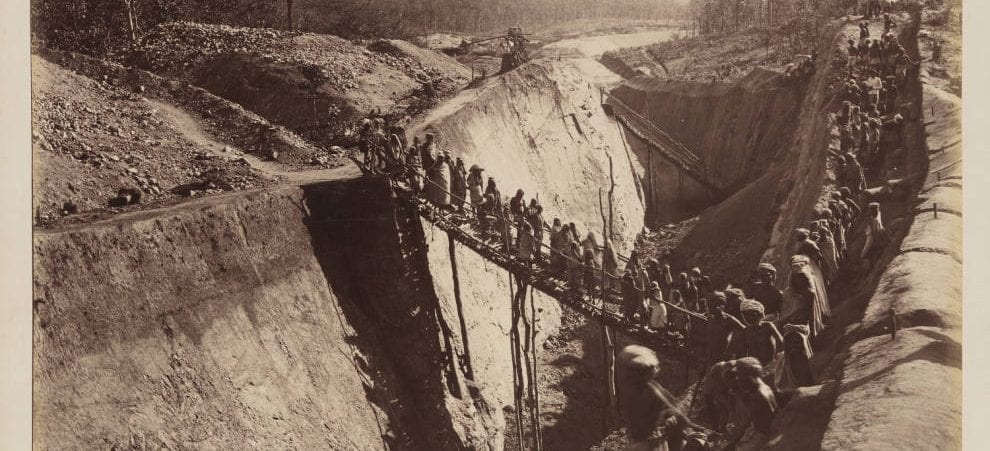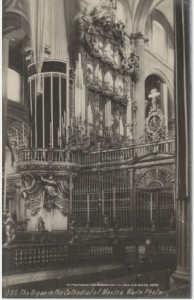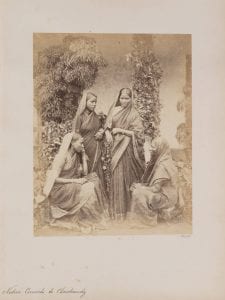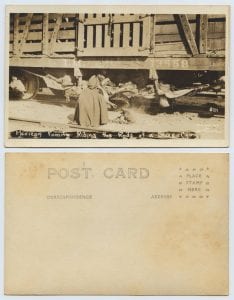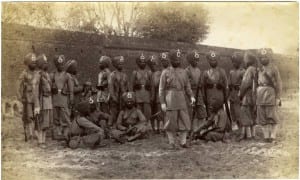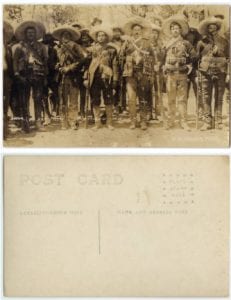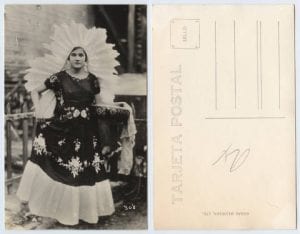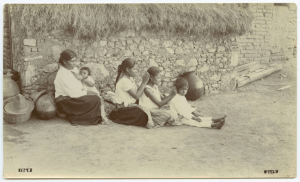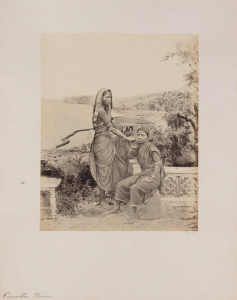The Cotton Market, Bombay, taken by John Williams, depicts a group of men working on a cotton farm in India. The men working are of various ages, as the men in the left half of the picture appear to be much older while the men on the right half of the picture look to be younger. There is also a teenager working on this farm, depicted sitting on the ground in front of the older men on the left. From their white matching outfits, it can be deduced that these men work in the fields in the hot sun and they wear white so as not attract heat to their body. In the background, there are two stacks of cotton bales. The triangular wooden structure suggests that the men are weighing out the cotton they picked so as to bring it to the marketplace and sell it appropriately. It can be deduced from this photograph that these men belong to the lower class and that their primary source of income, if not their only source of income, comes from their performance of manual labor in the cotton fields. However, the expressions and body language of these men appear to be rather depressed and gloomy, which raises the question: From where does this feeling of depression originate? Moreover, given that the picture was taken between 1855 and 1862 when India was under rule of the British empire, it raises another question: was this labor voluntary or forced on these Indian men?
March 28, 2017
by Henry Heyser
0 comments

